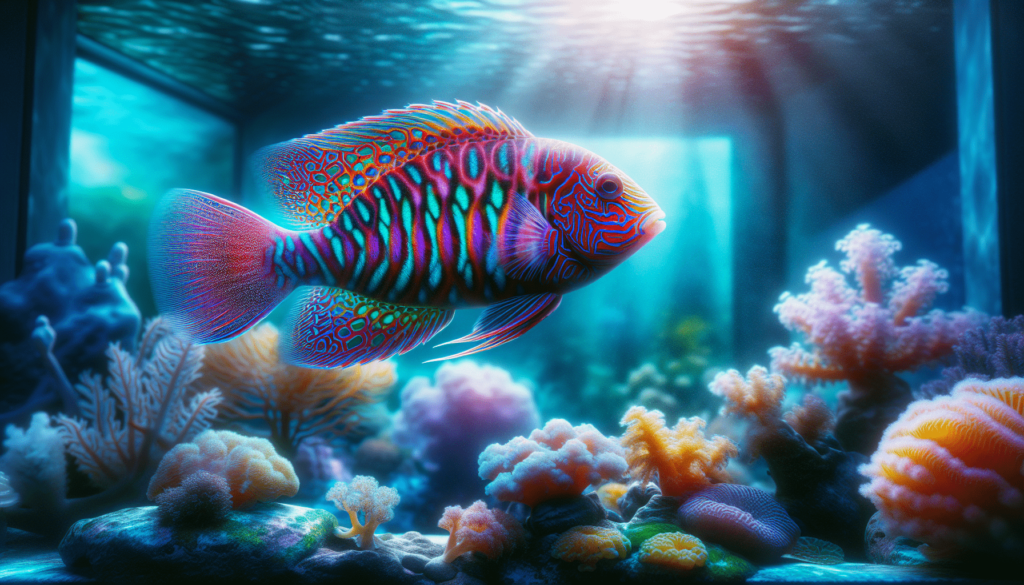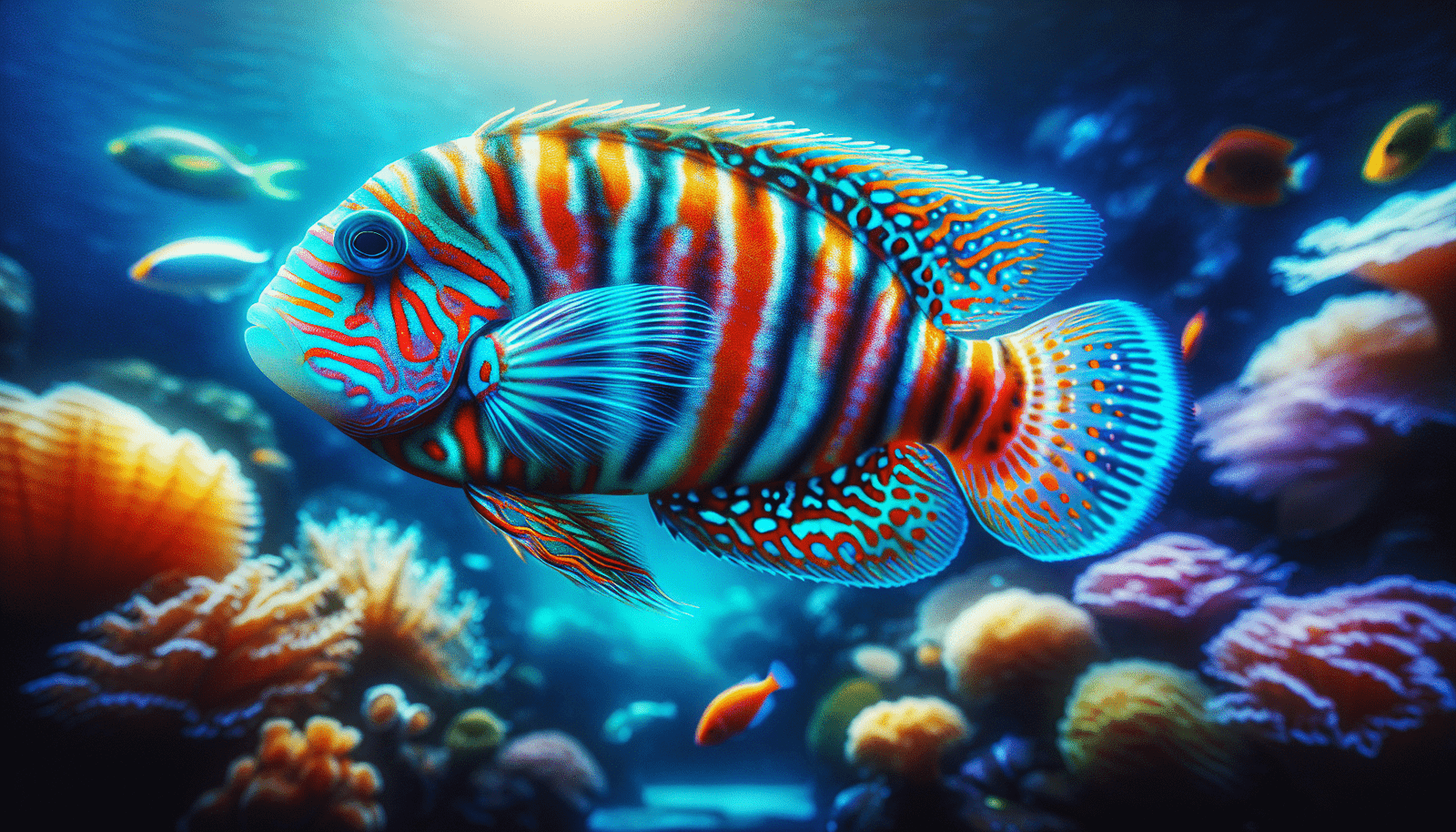Have you ever wondered what it takes to care for saltwater fish in your own home? Let’s embark on this journey together to explore the fascinating world of marine pet care. It’s a fantastic hobby with plenty of rewarding moments, but it does require some dedication and know-how. Keeping saltwater fish isn’t just about feeding them on time; it’s about creating a thriving environment that mimics the ocean as closely as possible.

Understanding the Basics
Before diving deeper, let’s start with some of the foundational aspects of caring for saltwater fish. Tackling the marine world requires patience, research, and, most importantly, a passion for marine life.
Why Choose Saltwater Fish?
Saltwater fish are colorful, diverse, and can be a fantastic addition to your household. You’ll find them with captivating behaviors and unique appearances, making them a more exotic choice over the typical freshwater counterparts. While they might need more attention and care, the visual and emotional rewards are undoubtedly worth the effort.
Essential Equipment You’ll Need
Having the right tools is crucial. Here’s a quick breakdown of the basic equipment you’ll need:
| Equipment | Purpose |
|---|---|
| Aquarium | The home for your fish, ideally large. |
| Filtration System | Keeps the water clean and the environment healthy. |
| Heater | Maintains stable water temperature. |
| Protein Skimmer | Removes organic compounds before they break down. |
| Lighting | Supports coral and enhances tank aesthetics. |
| Test Kits | Monitors water quality parameters. |
| Hydrometer | Measures salinity levels. |
This setup forms the backbone of your fish’s habitat and ensures they have a safe and stable home.
Setting Up Your First Tank
Creating a mini-ocean in your living space is both exciting and challenging. Let’s look at how you can set up your first saltwater tank.
Choosing the Right Aquarium
Size matters. A larger tank is generally more stable than a smaller one, which might suffer from rapid parameter changes. Starting with a tank of at least 30 gallons is usually recommended for beginners. It offers more stability and more room for error, giving you some breathing space as you learn.
Water Chemistry Explained
Saltwater isn’t just tap water with a pinch of table salt. It’s more complex, requiring the right balance of elements to ensure your fish thrive. You’ll need to monitor and adjust the following:
- Salinity: Target a salinity of around 1.020-1.025 for most marine fish.
- pH Level: Aim for a pH level between 8.0 and 8.4.
- Temperature: Keep it steady between 75 and 82 degrees Fahrenheit.
Using test kits regularly will help you keep everything balanced and stable.
Cycling Your Tank
Cycling is an essential process before you introduce your fish. It establishes beneficial bacteria that help break down waste, which keeps harmful elements like ammonia and nitrites in check. Here’s a brief step-by-step:
- Start with live rock or a bacteria supplement: This introduces beneficial bacteria.
- Monitor ammonia, nitrite, and nitrate levels: It might take a few weeks for these to stabilize.
- Wait patiently: Only add fish when the ammonia and nitrite levels are at zero, and nitrate levels are low.

Selecting Your Fish
Once your tank is cycled, the fun begins! Picking which fish to invite into your aquatic community can be thrilling. However, it’s important to choose compatible species.
Understanding Compatibility
Not all fish get along. Some are aggressive, while others are timid. Research each species to see if they’re a match made in aquatic heaven. Consider factors like:
- Size: Ensure the fish won’t outgrow your tank.
- Temperament: Avoid aggressive species if you have peaceful fish.
- Dietary Needs: Ensure similar dietary needs to streamline feeding.
Common Beginner Fish
Here are a few beginner-friendly saltwater fish:
- Clownfish: Hardy, easy to care for, and full of personality.
- Damselfish: Vibrant colors and good durability, though sometimes territorial.
- Gobies: Peaceful and thrive in sand-bottomed tanks.
- Blennies: Known for being active and engaging.
Choosing the right species will set the foundation for a healthy marine environment.
Acclimating New Fish
Introducing your fish correctly is crucial. Use the drip acclimation method, which involves slowly introducing your fish to their new home’s water over a couple of hours. This helps minimize shock and stress, ensuring a smooth transition.
Maintaining a Healthy Aquarium
Now that your fish are settled in, maintaining your tank’s health is essential. Proper care involves regular monitoring and some routine tasks.
Regular Maintenance Tasks
Weekly and monthly tasks will keep your tank in top shape. Here’s what you should focus on:
| Task | Frequency |
|---|---|
| Checking water parameters | Weekly |
| Water changes (10-15%) | Bi-weekly |
| Cleaning algae | As needed |
| Equipment checks | Monthly |
Keeping a log of these activities can prevent issues from snowballing.
Feeding Your Fish
A balanced diet is vital for your fish’s health. It’s beneficial to provide a variety of foods, including:
- Flakes and pellets: Staple food for general nutrition.
- Frozen or live food: Such as brine shrimp for added protein.
- Vegetables: Many species appreciate a bit of veggie now and then.
Feed them once or twice a day, in quantities they can finish within a few minutes. Overfeeding can lead to water quality issues, so moderation is key.
Avoiding Common Problems
Watch out for common pitfalls like overstocking, poor water quality, and ignoring early signs of illness in your fish. Quick action can prevent further complications.
Exploring Advanced Techniques
Once you’re comfortable with the basics, you might want to delve into more advanced aspects of marine aquarium care.
Reef Tanks and Corals
Reef tanks are fascinating and can add an incredible dimension to your setup. Corals are beautiful but require more precise water conditions and lighting. However, with the right research and care, they can flourish alongside your fish.
Introducing Invertebrates
Creatures like starfish, shrimps, and crabs add an exciting dynamic to your tank. They require specific care but offer rewards in biodiversity and interest.
Automation and Technology
Technology can take some weight off your shoulders. Automatic feeders, lights, and even mobile apps for monitoring can make maintenance less burdensome.
Understanding Fish Behavior
Monitoring your fish’s behavior can provide insights into their health and happiness.
Reading the Signs
Active swimming means health, while lethargy, hiding, or abnormal swimming may signal issues. Recognizing these signs early allows you to address potential health concerns swiftly.
Bonding with Your Fish
Building a rapport with your fish is possible! They can recognize you over time, especially at feeding times. A stable routine can help them feel secure and build trust.
Handling Emergencies
Even with the best care, problems might arise. Knowing how to act quickly can save your fish’s life.
Identifying Illness
Common signs of illness include spots, inflammation, or unusual behavior. Familiarize yourself with common diseases and their symptoms for timely intervention.
Quarantine Procedures
Setting up a separate tank is wise for treating sick fish. This avoids spreading illness and helps manage medication administration more accurately.
Continuing Your Education
The world of saltwater aquariums is vast. Keep learning through books, online communities, and local aquarium clubs to stay updated on new techniques and insights.
Joining Communities
Online forums and local clubs can provide support and shared experiences. They’re excellent resources for addressing specific problems and gaining new ideas.
Sharing Your Journey
Consider documenting your aquarium’s progress through photos or blogs. It’s fulfilling to track your journey and could be helpful to others embarking on a similar path.
Saltwater fishkeeping, when done right, can be incredibly rewarding. With proper care, your marine friends will thrive, and you’ll have a piece of the ocean to marvel at every day. So are you ready to create your personal marine world at home? Happy fishkeeping!
